Have you ever wondered which province Boracay, the world-famous resort island, is located in? Many travelers are curious about the exact location of this tropical paradise. Is it part of a larger province, or is it an independent island province itself? Let’s dive into the geography and uncover the province that is home to Boracay.
Key Takeaways:
- Boracay is situated in the province of Aklan in the Philippines.
- The island has a land area of 10.32 square kilometers and falls under the jurisdiction of three barangays in Malay, Aklan.
- Boracay is renowned for its stunning beaches, vibrant culture, and world-class tourism.
Geography and Location of Boracay
Boracay Island, located in the province of Aklan under the jurisdiction of three barangays in Malay, Aklan, is a tropical paradise situated off the northwest coast of Panay Island in the Western Visayas region of the Philippines. With a land area of 10.32 square kilometers, this enchanting destination is known for its stunning beaches and crystal-clear waters.
Geographical Coordinates of Boracay
Boracay Island is positioned at coordinates 11°58’8″N latitude and 121°55’26″E longitude. It is surrounded by the Visayan Sea and borders the Jintotolo Channel, Sibuyan Sea, and Sulu Sea. Its prime location offers visitors breathtaking views and easy access to the island’s natural wonders.
From scenic coastlines to vibrant marine life, Boracay’s geographical location makes it an ideal destination for beach lovers, water enthusiasts, and explorers looking to immerse themselves in the beauty of the Philippines.
History of Boracay
Boracay has a fascinating history that spans centuries. From its pre-colonial roots to its contemporary development, the island has undergone significant changes and transformations over the years.
Pre-Colonial Boracay
In pre-colonial times, Boracay was home to the indigenous Ati and Tumandok people. These communities lived harmoniously with nature, relying on fishing and agriculture as their primary means of sustenance. They revered the island as sacred and referred to it as “Buracay.”
“The Indigenous Ati and Tumandok people have a deep connection to Buracay. They treated the island with utmost respect and lived in harmony with nature.”
The Ati and Tumandok people embraced a rich cultural heritage, showcasing their traditions through dances, rituals, and craftsmanship. Their presence on the island shaped its identity and created a foundation for the vibrant culture that still thrives today.
Spanish Colonization and Contemporary Boracay
In the 16th century, Spanish colonizers arrived in the Philippines and brought significant changes to the island. Boracay was eventually named after its local moniker, “Buracay,” by the Spaniards, who introduced Catholicism and Western influence to the region.
Fast forward to the contemporary period, Boracay experienced a surge in tourism during the 1970s. The island’s breathtaking beauty and pristine beaches attracted travelers from all over the world. Resorts, restaurants, and entertainment venues sprouted along the coastline, establishing Boracay as a premier tourist destination in the Philippines.
However, the rapid growth and unregulated development led to environmental concerns, including pollution and overcrowding. In response, Boracay underwent a six-month closure in 2018 for restoration and rehabilitation. The closure aimed to address sustainability issues, improve infrastructure, and preserve the natural beauty of the island.
“Boracay underwent a major closure in 2018 to combat environmental challenges, paving the way for a more sustainable and regulated approach to tourism.”
After the reopening of Boracay in October 2018, the island implemented new rules and regulations to ensure responsible tourism. These measures include limiting the number of daily visitors, strict wastewater management systems, and the prohibition of certain activities harmful to the environment.
Today, Boracay continues to captivate visitors with its stunning beaches, vibrant culture, and commitment to sustainable tourism. It stands as a testament to the resilience of a destination that has adapted and evolved while staying true to its roots.
In Summary
Boracay’s history is a tapestry woven with the stories of its indigenous communities, Spanish colonization, and modern-day challenges and developments. It remains a testament to the island’s enduring spirit, offering a glimpse into its vibrant past and commitment to a sustainable future.
Getting to Boracay
Getting to Boracay is a seamless process with convenient flight options to two nearby airports. Whether you choose to travel via Kalibo Airport or Caticlan Airport, you’ll find that both airports provide efficient connections to the island.
If you prefer a larger airport with more flight options, Kalibo Airport is an excellent choice. Situated approximately a two-hour drive from the pier, Kalibo Airport offers regular flights from Manila, making it easily accessible for domestic and international travelers. After landing at Kalibo Airport, travelers can take a short boat trip from the pier to Boracay.
On the other hand, if you prioritize a shorter journey to Boracay, Caticlan Airport is the closer option. Located just a 20-minute drive from Boracay, Caticlan Airport offers a quick and convenient route to the island. Flights to Caticlan Airport are available from Manila and are operated by reputable airlines such as Cebu Pacific, Air Asia, and Philippine Airlines. From Caticlan Airport, visitors can enjoy a leisurely sail to Boracay.
Upon arrival at either airport, various modes of transportation like open vans, coasters, buses, and minivans are readily available to transport you to the ports for onward travel to Boracay. With multiple options and reliable services, reaching the stunning shores of Boracay has never been easier.
Airports near Boracay
| Airport | Approximate Distance from Boracay | Flight Options |
|---|---|---|
| Kalibo Airport | 2-hour drive from the pier | Regular flights from Manila |
| Caticlan Airport | 20-minute drive from Boracay | Flights from Manila |
Accommodation Options in Boracay
Boracay offers a wide range of accommodation options to suit different preferences and budgets. Whether you’re looking for luxurious beachfront resorts, cozy guesthouses, or budget-friendly lodges, there is something for everyone on this idyllic island. With careful research and planning, you can find the perfect place to stay that offers both comfort and value for money.
Five-Star Luxury
If you’re seeking the ultimate in luxury and indulgence, Boracay is home to several five-star hotels that cater to discerning travelers. One notable example is the renowned Boracay Shangri-La, which offers elegant rooms, world-class amenities, and breathtaking views of the island’s pristine shores. These beachfront properties provide a serene escape where you can unwind and enjoy the finer things in life.
Mid-Range Comfort
For travelers looking for comfortable and affordable accommodations, Boracay has a variety of mid-range options available. These include charming boutique hotels, beachside villas, and family-friendly resorts. With average room prices ranging from $30 to $100 per night, you can enjoy a pleasant stay without breaking the bank. These establishments often offer amenities such as swimming pools, on-site dining, and proximity to the island’s main attractions.
Budget-Friendly Choices
If you’re traveling on a tight budget, Boracay also offers budget-friendly accommodations that provide basic amenities and a convenient location. Guesthouses, hostels, and affordable resorts are scattered across the island, providing a comfortable place to rest after a day of exploring. While the amenities may be more modest compared to luxury resorts, these options ensure that you can still enjoy your Boracay experience without overspending.
Please note that prices and availability may vary depending on the season and demand. It’s advisable to book your accommodation in advance, especially during peak travel periods, to secure the best deals and availability.
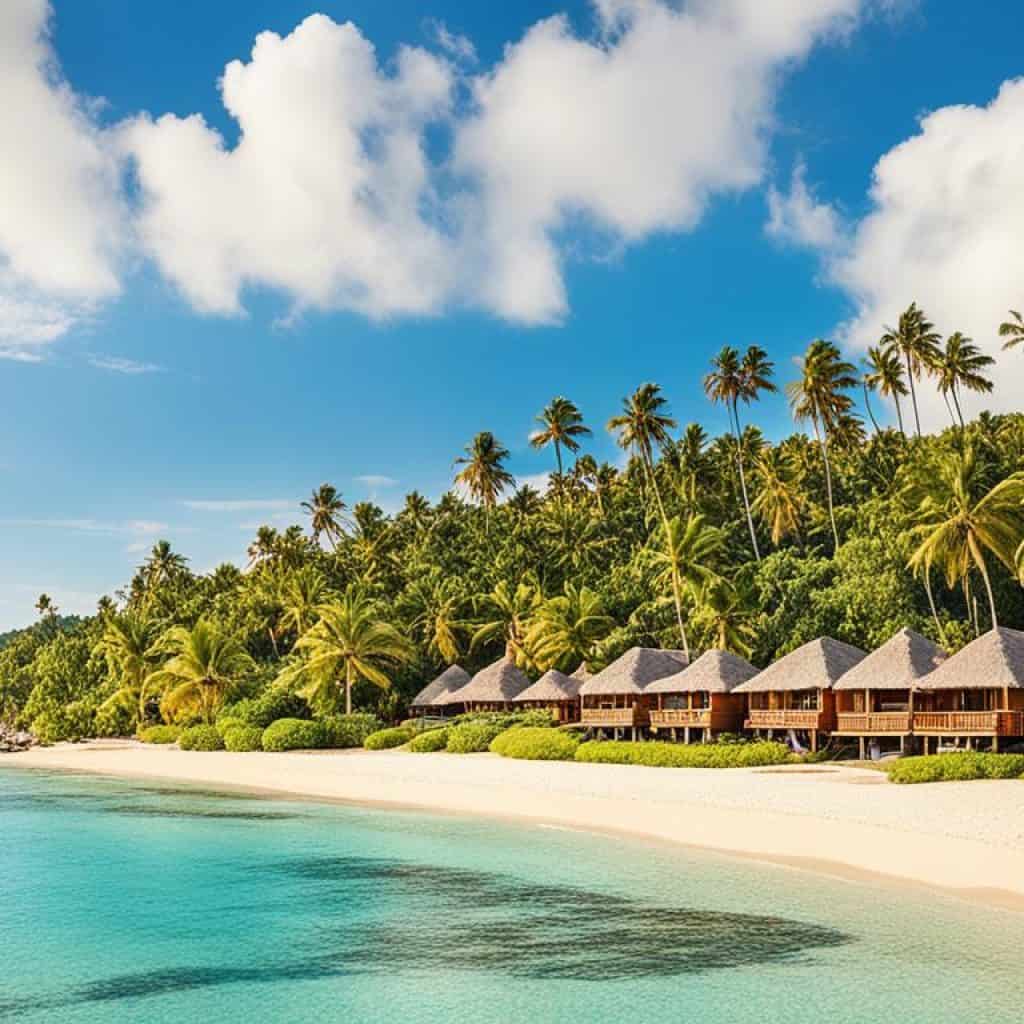
| Accommodation Type | Average Room Price Range | Noteworthy Features |
|---|---|---|
| Five-Star Hotels | $150-$500 per night | Beachfront locations, luxurious amenities |
| Mid-Range Resorts | $80-$150 per night | Swimming pools, on-site dining, proximity to attractions |
| Budget-Friendly Guesthouses | $30-$80 per night | Basic amenities, convenient locations |
Attractions and Activities in Boracay
Boracay, known for its stunning beaches, offers more than just picturesque shores. The island provides a plethora of attractions and activities that cater to the diverse interests of its visitors.
1. Island Hopping Tours
Embark on exciting island hopping tours that allow you to explore the nearby islands and appreciate their pristine beauty. From secluded coves to breathtaking viewpoints, these tours offer an unforgettable experience. Don’t forget to bring your camera to capture the mesmerizing landscapes.
2. Water Activities
If you’re an adventure seeker or a water sports enthusiast, Boracay has you covered. Dive into the crystal-clear waters and discover a vibrant underwater world through scuba diving. Pump up your adrenaline with thrilling activities like parasailing, where you’ll soar above the island’s stunning coastline. Alternatively, try your hand at fly fishing and experience the thrill of catching fish in the open sea.
3. Land Activities
Boracay not only offers water-based activities but also a wide range of land activities to keep you entertained. Explore the local food scene and savor the delectable flavors of Filipino cuisine. Don’t miss out on the vibrant nightlife, where you can dance the night away at beachfront bars and clubs. Immerse yourself in the rich culture of Boracay by participating in events like the colorful Boracay Ati-atihan festival, which showcases traditional dances, music, and vibrant costumes.
| Attractions | Activities |
|---|---|
| White Beach | Beach lounging, swimming, sunbathing |
| Puka Beach | Shell collecting, beach walks, snorkeling |
| Mount Luho | Hiking, sightseeing, panoramic views |
| D’Mall | Shopping, dining, people-watching |
| Boracay Ati-atihan Festival | Traditional dances, music, street parades |
Safety and Security in Boracay
While Boracay is generally a safe destination, it’s always important for tourists to take precautions to ensure their safety and security. Here are some security tips to keep in mind during your visit:
- Keep an eye on your valuables, especially in crowded areas. Pickpocketing can happen, so it’s important to stay vigilant and secure your belongings.
- Secure your wallet and mobile phone. Keep them in zipped pockets or bags to minimize the risk of theft.
- If you’re unsure about directions or need assistance, don’t hesitate to ask locals. Most Filipinos speak English and are friendly and helpful.
- Exchange your currency to Philippine pesos. It’s the accepted currency in Boracay and will make transactions smoother.
Boracay is a popular tourist destination, and the local authorities prioritize the safety and security of visitors. However, it’s always best to take precautions and be aware of your surroundings. By following these security tips, you can have a safe and enjoyable experience on this beautiful island.
Best Time to Visit Boracay
Boracay, with its tropical climate, is an enticing destination that can be enjoyed year-round. However, if you want to experience the idyllic weather and make the most of your beach getaway, it’s recommended to plan your trip during the dry season. The dry season in Boracay spans from November to April, offering visitors clearer skies, calmer waters, and ideal beach weather.
During these months, you can bask in the warm sun, take refreshing dips in the crystal-clear waters, and indulge in various beach activities without worrying about frequent rain showers or strong winds. Whether you’re seeking relaxation on the pristine shores or engaging in exciting water sports, the dry season provides the perfect conditions to enjoy everything Boracay has to offer.
It’s important to note that weather patterns can fluctuate, and unexpected rain showers or cloudy days may occur even in the dry season. Checking the weather forecast before your trip and being prepared with appropriate attire will help you make the most of your stay.
On the other hand, if you don’t mind occasional rain showers and stronger winds, visiting Boracay during the wet season, which falls between May and October, can have its own charm. The island’s lush greenery comes alive, and the hotel rates are often more affordable during this period. Just be prepared for the possibility of some brief rain showers and ocean conditions that may not be as calm as during the dry season.
Ultimately, the best time to visit Boracay depends on your preferences and priorities. Whether you choose to visit during the dry season for optimal beach weather or during the wet season for a quieter and more budget-friendly experience, Boracay’s captivating beauty and warm hospitality are sure to make your trip unforgettable.
| Season | Timeframe | Weather Conditions | Advantages |
|---|---|---|---|
| Dry Season | November to April | Clear skies, calmer waters, ideal beach weather | – Enjoying a sun-soaked beach experience |
| Wet Season | May to October | Occasional rain showers, stronger winds | – Lush greenery, more affordable hotel rates |
Conservation and Sustainability Efforts in Boracay
After its closure in 2018, Boracay took significant steps to protect its natural beauty and combat environmental challenges through various conservation and sustainability initiatives. The island has been dedicated to preserving its pristine condition and providing a more sustainable experience for visitors.
“Preserving the natural beauty of Boracay is our top priority. We believe in embracing sustainable practices to ensure a better future for our island,” says Maria Santos, the head of Boracay Conservation Foundation.
One of the key focuses in Boracay’s sustainability efforts is the use of biodegradable products. Local businesses and resorts have adopted eco-friendly alternatives such as biodegradable utensils, straws, and packaging to reduce plastic waste and minimize environmental impact.
Another significant initiative is the introduction of electric tricycles for transportation. These zero-emission vehicles contribute to the reduction of air and noise pollution on the island, promoting a cleaner and more enjoyable experience for both residents and tourists.
The hospitality industry in Boracay has also embraced sustainable practices. Many resorts and hotels have implemented energy-saving measures, such as utilizing solar power and incorporating water conservation systems. These efforts help reduce the island’s carbon footprint and ensure long-term environmental sustainability.
Boracay’s commitment to plastic-free initiatives is exemplified in its banning of single-use plastics, including plastic bags and disposable utensils. Visitors are encouraged to use reusable options and be mindful of their ecological footprint during their stay on the island.
Benefits of Conservation and Sustainability Initiatives
The conservation and sustainability efforts in Boracay have yielded numerous benefits for both the environment and the local community. The reduction of plastic waste has had a positive impact on the marine ecosystem, protecting the diverse marine life and maintaining the vibrant coral reefs surrounding the island.
By embracing sustainable practices, Boracay has also preserved its natural resources for future generations, ensuring the island remains a paradise destination for years to come. The initiatives have not only enhanced the beauty of Boracay but have also attracted environmentally conscious tourists who appreciate and support eco-friendly destinations.
| Conservation and Sustainability Initiatives in Boracay | Benefits |
|---|---|
| Use of biodegradable products | – Reduction in plastic waste – Minimization of environmental impact |
| Introduction of electric tricycles | – Reduction of air and noise pollution – Enhanced visitor experience |
| Sustainable practices in the hospitality industry | – Energy conservation – Water conservation – Decreased carbon footprint |
| Plastic-free initiatives | – Preservation of marine ecosystem – Promotion of eco-friendly tourism |
Through these conservation and sustainability initiatives, Boracay is setting a positive example for other destinations globally, inspiring them to prioritize environmental preservation and adopt eco-friendly practices.
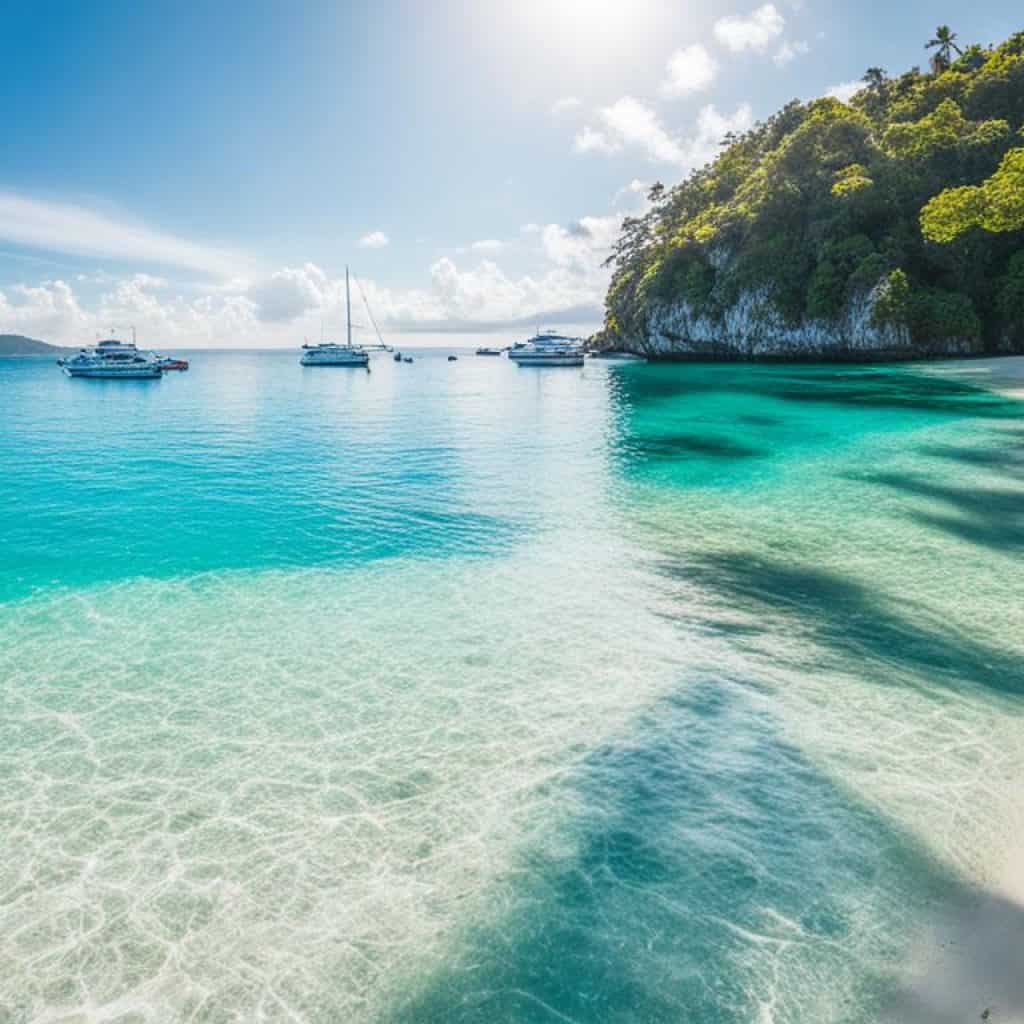
COVID-19 Impact on Boracay
Like many other destinations, Boracay has been significantly impacted by the COVID-19 pandemic. In response to the global health crisis, the island took necessary measures to prioritize the safety and well-being of both locals and visitors. As a result, Boracay was temporarily closed to tourism in March 2020, with strict travel restrictions implemented to combat the spread of the virus.
Following months of careful evaluation and planning, Boracay eventually reopened its doors to tourists. However, the reopening came with the implementation of strict COVID-19 protocols and guidelines. Visitors are required to adhere to testing requirements and health screenings upon arrival to ensure the safety of the community. It’s important for travelers to stay updated with the latest travel advisories and comply with the recommended safety precautions during their visit to Boracay.
“The health and safety of our residents and visitors are our top priority. While we understand the desire to travel and experience the beauty of Boracay, it is essential that we all work together to mitigate the risks posed by the ongoing pandemic.”
Travel restrictions and guidelines may vary depending on the prevailing situation. It is advisable to regularly check official sources and consult with travel agencies for the most up-to-date information before planning a trip to Boracay.
Boracay Travel Restrictions
| Restrictions | Details |
|---|---|
| Testing Requirements | Visitors may be required to present a negative COVID-19 test result taken within a specified timeframe before arrival. The test must be conducted at an accredited laboratory. |
| Health Screenings | Upon arrival, visitors may undergo health screenings such as temperature checks, symptom assessments, and contact tracing protocols. |
| Quarantine Period | In some cases, travelers may be required to undergo a mandatory quarantine period in designated facilities. The duration and conditions of quarantine may vary depending on the individual’s travel history and health status. |
| Exemptions | Some categories of visitors, such as returning residents or essential workers, may be exempted from certain travel restrictions. Exemptions are subject to government regulations and guidelines. |
It is crucial for visitors to familiarize themselves with the specific requirements and regulations before embarking on a trip to Boracay to ensure a smooth and hassle-free travel experience.
Capturing the Beauty of Boracay in Photos
Boracay, with its stunning landscapes and picturesque beaches, provides photographers with endless opportunities to capture the island’s natural beauty. Whether you’re an amateur or a seasoned pro, Boracay offers the perfect backdrop for stunning photos that will leave you in awe.
One of the most iconic photo spots in Boracay is the famous White Beach. Stretching over four kilometers, this powdery white sand beach is a paradise for beach photography. Capture the crystal-clear turquoise waters, the colorful boats lining the shore, and the breathtaking sunsets that paint the sky with vibrant hues.
For a more secluded and tranquil setting, head to Puka Beach. Known for its unspoiled beauty and unique Puka shells, this hidden gem offers a peaceful escape from the crowds. Photograph the untouched coastline, the serene azure waters, and the natural rock formations that epitomize Boracay’s charm.
If you want to capture panoramic views of the entire island, make sure to visit the Mount Luho viewpoint. Located at the highest point in Boracay, this vantage point offers a breathtaking 360-degree perspective. Capture the sweeping vistas of the island, the lush greenery, and the sparkling waters that extend as far as the eye can see.
Another vibrant and bustling area worth capturing is D’Mall. This lively hub is known for its colorful shops, vibrant street art, and lively atmosphere. Stroll through the maze of shops, restaurants, and stalls, and photograph the vibrant architecture, quirky signs, and the lively buzz of people going about their day.
Tips for capturing the best photos in Boracay
- Visit the popular photo spots during the golden hour, just before sunrise or sunset, for the most magical light and colors.
- Experiment with different angles and perspectives to create unique compositions.
- Don’t be afraid to venture off the beaten path and explore lesser-known areas for hidden photography gems.
- Take advantage of the island’s diverse landscapes, from the beaches to the mountains, and capture the variety of scenery Boracay offers.
- Interact with the locals and capture authentic moments that showcase the island’s vibrant culture and friendly atmosphere.
Remember, Boracay’s beauty is not limited to its beaches alone. Explore the island’s rich culture, indulge in its delicious cuisine, and immerse yourself in the vibrant atmosphere to truly capture the essence of this tropical paradise.
| Photo Spot | Description |
|---|---|
| White Beach | Boracay’s most famous beach known for its powdery white sand and stunning sunsets. |
| Puka Beach | A secluded beach with pristine waters and natural rock formations, perfect for tranquil photos. |
| Mount Luho viewpoint | The highest point in Boracay offering panoramic views of the island’s breathtaking landscapes. |
| D’Mall | A bustling area with colorful shops and vibrant street art, capturing the lively atmosphere of Boracay. |
Exploring the Culture of Boracay
One of the highlights of visiting Boracay is experiencing its vibrant culture. The island is home to various ethnic groups, including the Ati indigenous people. The annual Boracay Ati-atihan festival celebrates the cultural heritage of the Ati community and is a major draw for tourists. The festival features colorful parades, traditional dances, and music. Exploring the local markets, trying Filipino cuisine, and interacting with the friendly locals will further immerse you in Boracay’s unique culture and traditions.
Ati-Atihan Festival: A Celebration of Boracay Culture
The Ati-atihan festival is a vibrant celebration that showcases the culture and traditions of Boracay. Held annually in January, the festival dates back to the pre-colonial era when the Ati people engaged in a lively street parade to express gratitude and celebrate a bountiful harvest. Today, it has evolved into one of the Philippines’ most popular festivals, attracting both locals and tourists from around the world.
The festival is characterized by its lively street dances, with participants dressed in colorful tribal costumes and painted faces to mimic the appearance of the Ati people. The participants, known as “tribal warriors,” dance to the beat of drums and other traditional instruments while chanting “Hala Bira!” meaning “Let’s go, warriors!” This energetic and joyous spectacle creates a festive atmosphere that permeates the entire island.
The Ati-atihan festival is a must-see for anyone interested in immersing themselves in the rich culture and traditions of Boracay. It is a captivating display of unity, creativity, and pride, showcasing the vibrant spirit of the Ati community.
Besides the Ati-atihan festival, Boracay also offers opportunities to explore its cultural heritage throughout the year. The island’s local markets are a treasure trove of traditional crafts, souvenirs, and artisanal products. Here, visitors can discover handmade clothing, intricate accessories, and unique artworks created by local artists.
For those who crave an authentic taste of Filipino cuisine, Boracay’s local food scene is a delight. Indulge in mouthwatering dishes such as Adobo, Sinigang, and Lechon, which offer a blend of flavors that reflect the diversity of Filipino culture. Don’t forget to try the island’s fresh seafood, grilled to perfection and served with a side of warm Filipino hospitality.
Interacting with Locals and Embracing Boracay’s Culture
Interacting with the friendly locals is an essential part of embracing Boracay’s culture. The people of Boracay are known for their warm and welcoming nature, always ready to share stories and recommendations with visitors. Engage in conversations, learn about their traditions, and gain insights into their daily lives. You may even have the chance to join in their festivities or learn a traditional dance.
To truly immerse yourself in Boracay’s cultural tapestry, consider participating in workshops or tours that offer hands-on experiences. Learn traditional crafts like basket weaving or try your hand at traditional cooking techniques under the guidance of skilled local artisans.
By exploring Boracay’s culture, from its vibrant festivals to its local markets and friendly locals, you will discover a dynamic and captivating side of the island that goes beyond its stunning beaches. Embrace the cultural richness of Boracay and create memories that will last a lifetime.
Conclusion
Boracay, located in the province of Aklan in the Philippines, is a world-famous resort island that offers a perfect blend of natural beauty, vibrant culture, and exciting activities. With its stunning beaches, turquoise waters, and lush landscapes, Boracay attracts travelers from all around the globe. Whether you’re looking for a relaxing getaway, an adventurous experience, or a chance to immerse yourself in the local culture, Boracay has something for everyone.
From the famous White Beach, where you can unwind and bask in the sun, to the thrilling water sports like scuba diving and parasailing, there’s no shortage of things to do in Boracay. The island also boasts a lively nightlife, with beachfront bars and restaurants providing a vibrant atmosphere. And let’s not forget about the delectable Filipino cuisine that awaits you at every corner. Boracay truly offers a feast for the senses.
So, whether you’re planning a romantic honeymoon, a family vacation, or a solo adventure, Boracay is the perfect destination. Explore its breathtaking beauty, indulge in its warm hospitality, and create memories that will last a lifetime. Come and experience the enchantment of Boracay for yourself, and you’ll understand why it has earned its reputation as one of the world’s most sought-after tropical paradises.
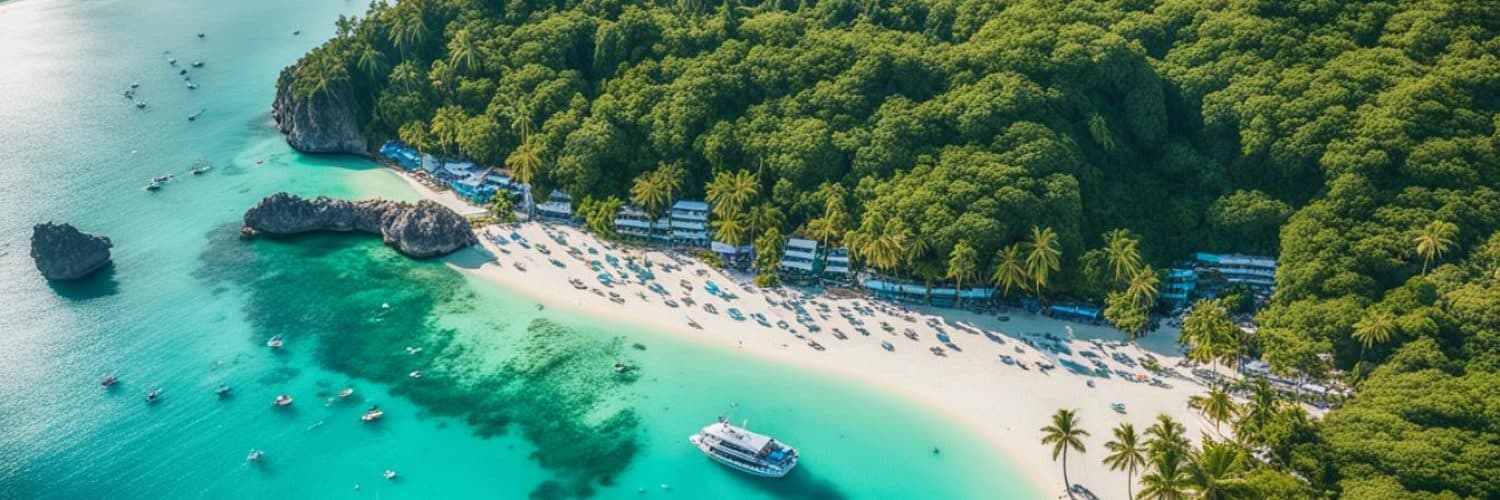
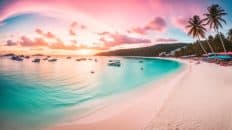
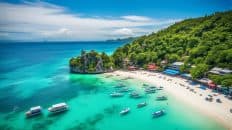
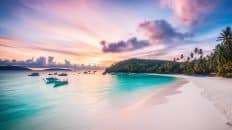














Add comment